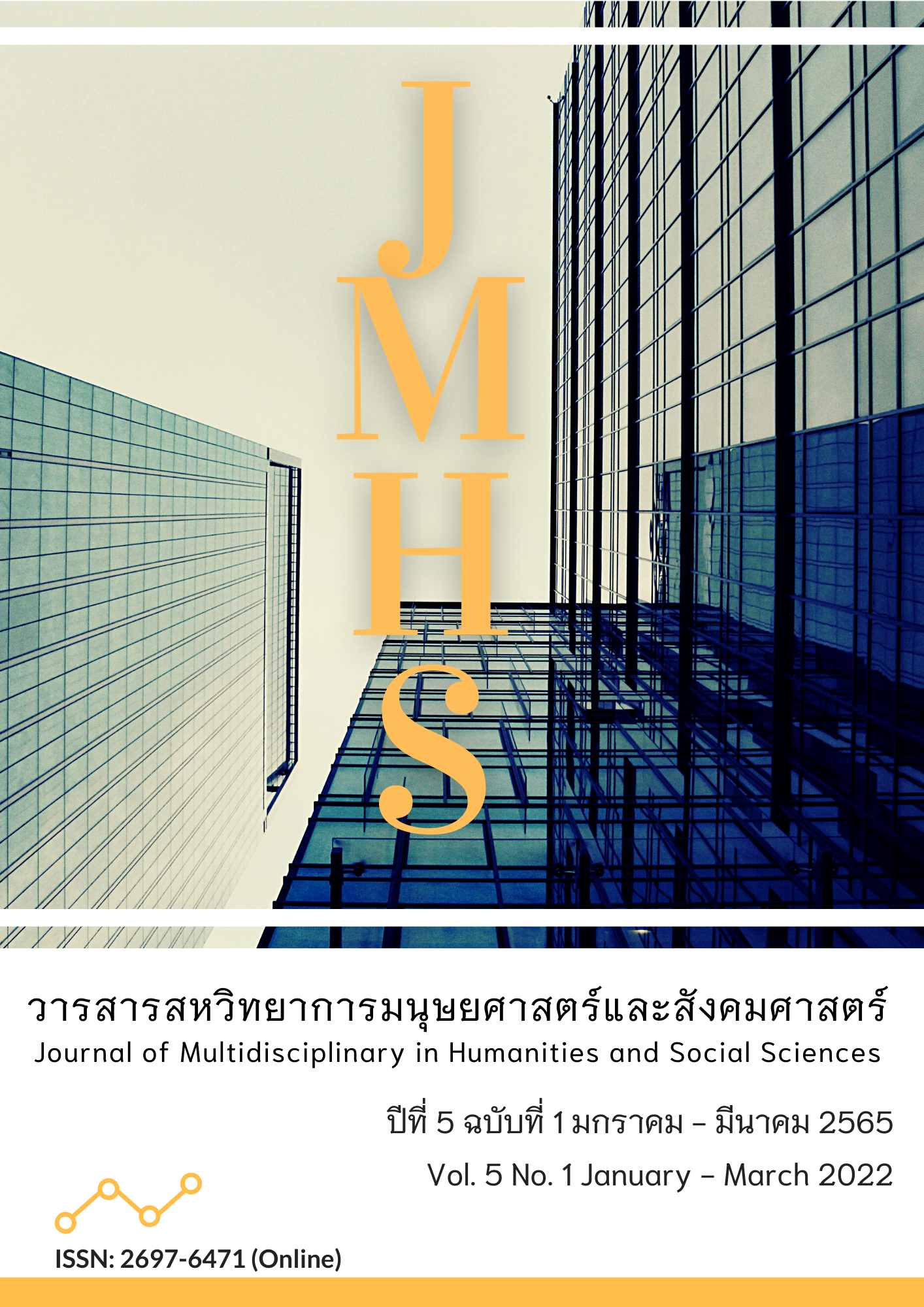Guideline of Development Watparattaphum Songkla Province to Be Vipassana Meditation Center
Main Article Content
Abstract
environment in the practice of Vipassana meditation according to Sappaya 7 principles in order to resolve misunderstandings about the goals of Dharma practice. By using a mixed research methodology, quantitative research and qualitative research method/documentary, which was divided into two phases: 1) documentary research 2) as an assessment. The results of completeness were summarized by interview and questionnaire by selecting a sample from 268 practitioners of Wat Pa Rattaphum. The data was analyzed using SWOT Analysis, then summarized in the form of the CIPPI Model and presented in the Descriptive Statistics formation. It was found that:
Wat Pa Rattaphum was successful because of the following important factors: 1) Context, Wat Pa Rattaphum has community support 2) Factors, peaceful environment (abbot), convenient transportation (orbit), complete food (nutrient), shady (meaning), monks enough Vipassana Master (Pukkha) is encouraged to practice Dhamma to achieve the goals; 3) Process, there is a policy for both education and observance of the ordinances consistent with Buddhist scriptures (passa); 4) Productivity, it employs the 4 foundations of mindfulness practice, which enables dharma practitioners to have peace of mind through precepts, concentration, and wisdom; and 5) Effect, it has faith to support the office.
From the research results, it was found that Sappaya 7 of Wat Pa Rattaphum was appropriate. It is a tool to support the development approach, that is, to be able to solve problems, understand and correct practice. According to Buddhist principles, I hope that this research will be a development guideline for temples and other dharma practice centers in the future for the benefit of society and the world.
Article Details

This work is licensed under a Creative Commons Attribution-NonCommercial-NoDerivatives 4.0 International License.
Views and opinions appearing in the Journal it is the responsibility of the author of the article, and does not constitute the view and responsibility of the editorial team.
References
พระธรรมธีรราชมหามุนี (โชดก ญาณสิทธิ). (2538). หลักและวิธีการปฏิบัติวิปัสสสนากรรมฐาน. (พิมพ์ครั้งที่ 6). กรุงเทพฯ: สหธรรมิก.
พระพรหมคุณาภรณ์ (ป. อ. ปยุตฺโต). (2557). พจนานุกรมพุทธศาสตร์ ฉบับประมวลธรรม. (พิมพ์ครั้งที่ 27). กรุงเทพฯ: โรงพิมพ์มหาจุฬาลงกรณราชวิทยาลัย.
พระพรหมคุณาภรณ์ (ป.อ. ปยุตฺโต). (2552). พุทธธรรม ฉบับปรับปรุงและขยายความ. (พิมพ์ครั้งที่ 11). กรุงเทพฯ: โรงพิมพ์มหาจุฬาลงกรณราชวิทยาลัย.
พระมหากิตติณัฏฐ์ สุกิตฺติเมธี. (2564). การวิเคราะห์แนวทางงดเว้นจากความเสื่อมในปราภวสูตร. วารสารสหวิทยาการมนุษยศาสตร์และสังคมศาสตร์, 4(1), 84-95.
พระโสภณมหาเถระ อัครมหาบัณฑิต (มหาสีสยาดอ) (2549). มหาสติปัฏฐานสูตรทางสู่นิพพาน. (พระคันธสาราภิวงศ์, ผู้แปล). กรุงเทพฯ: ไทยรายวันการพิมพ์.
มหาจุฬาลงกรณราชวิทยาลัย. (2539). พระไตรปิฎกภาษาไทย ฉบับมหาจุฬาลงกรณราชวิทยาลัย. กรุงเทพฯ: โรงพิมพ์มหาจุฬาลงกรณราชวิทยาลัย.
สอาดลักษณ์ จงคล้ายกลาง. (2548). เอกสารชุดโครงการวิจัยและส่งเสริมวัดเพื่อการพัฒนาการศึกษาและการเผยแผ่ศาสนธรรม ลำดับที่ 5 วัดปัญญานันทาราม อำเภอคลองหลวง จังหวัดปทุมธานี การเผยแผ่ศาสนธรรมดีเด่น. กรุงเทพฯ: พิมพ์ดีการพิมพ์.
อุไรพร ประชาบุตร และ วิไลศักดิ์ กิ่งคำ. (2564). ศึกษาความสัมพันธ์ระหว่างอานาปานสติกับไตรลักษณ์ ในคัมภีร์พระพุทธศาสนาเถรวาท. วารสาร มจร บาฬีศึกษาพุทธโฆสปริทรรศน์, 7(2), 1-12.
Damnoen, P.S. (2021). The Development of Student Characteristics in According to the Nawaluk Framework of the Buddhist integration of Buddhapanya Sri Thawarawadee Buddhist College. Asia Pacific Journal of Religions and Cultures, 5(2), 126-135.
Pandita, S. U. (1993). In This Very Life (2nd ed). Kandy: Buddhist Publication Society.
Provus, M. M. (1969). Discrepency Evaluation for Educational Program Improvement and Assessment. Berkeley. California: McCutchat.
Sayadaw, M. (1992). The Satipatthana Vipassana Meditation. Yangon: Buddha Sasana Nuggaha Organization.
Tan, C. C., & Damnoen, P. S. (2020). Buddhist Noble Eightfold Path Approach in the Study of Consumer and Organizational Behaviors. Journal of MCU Peace Studies, 8(1), 1–20.


